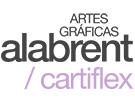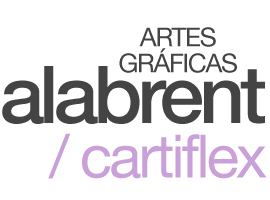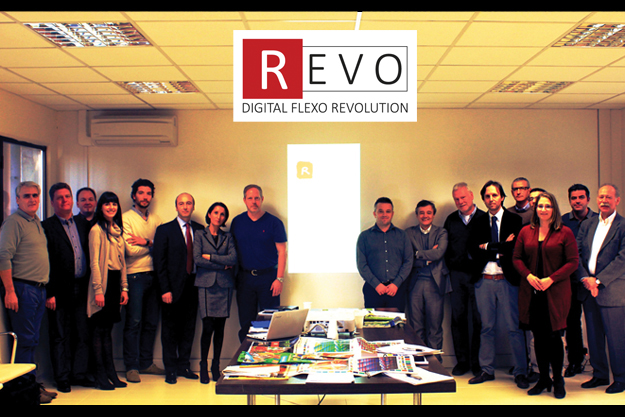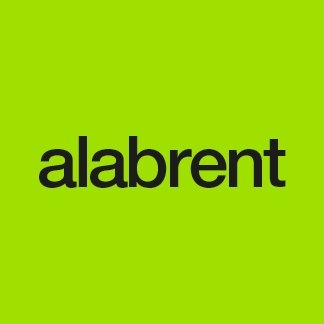Redacción Alabrent
The REVO Project Team members have started to cooperate in December 2013, officially announcing the project in February 2014. REVO Team has selected UV Flexo, extended colour gamut and digital process automation as the three technology drivers to support flexography to become “digital” and keep its role of leadership in Labels and Packaging industry. “We want to create an industry move towards flexo digitalization” state REVO Team Members “We share together all our latest innovation, our open and cooperative approach is the key to success”. Every partner delivers a specific technical contribution to the project:Niklas Olsson of Flint Group Narrow Web comments: “UV Flexo is the ideal process to become digital: UV inks are inherently consistent as there is no VOC evaporation to “disturb” the printing process, furthermore inks do not dry on the plates so waste is reduced and quality consistency increases. UV flexo inks printing quality is superior to water and solvent based flexo inks as less ink is transferred (ink is full solid, without VOCs). Dot gain is reduced and ink densities are higher. REVO process needs top printing quality and high colour density to achieve the best performances. New generation low migration UV Flexo inks support the REVO Digital Flexo Revolution with high pigmentation, consistent ink transfer, consistent density properties, giving to REVO projects a wide range of graphic possibilities, and excellent consistency performances.”
Dan Pulling of Esko adds: “Extended colour gamut is the most logic solution for the flexo industry going “digital”. 7 inks always in the press. No need to change anilox or ink. No special colours, no colour matching, no waste of substrate, no press down-time. Most PMS colours can be reproduced by printing 7 colours on top of each other. With 7 colours separation pre-press can “digitally” reproduce 90-95% of PMS colours. A new era can be predicted for Flexo, fully integrated in a digital work flow, as it happens already with Digital presses. The same file can be printed on a Digital or on a Digital Flexo press, with consistent “digital” print quality, and equivalent costs and productivity on both presses (Flexo keeping a wider range of applications in medium to long runs). REVO technology also provides greater design flexibility as the same job can be printed with virtually unlimited number of PMS colours. Or 2 or more jobs can be interlocked on the same web, with total different PMS colours. REVO opens a wide range of new possibilities for graphic designers and production managers. Wide flexibility in a “digital” REVO production flow.”
Friedrich Wolf of DuPont states: “New digital flexo plates” allow for extreme consistency and print quality. New plate qualities and modified processing work flows results in high image resolution and excellent ink transfer. The solvent free plate processing technology supports the environmental awareness of the REVO project. Fine screen rule of 80 lines per cm is the new standard, changing again the rules of our industry. The new generation digital plates provide the requested quality, thus a wide gamut of PMS colours can be reproduced, without changing the inks in the press. The final printed quality is also more vibrant, with more “natural” greens, reds, oranges and blues. New graphic opportunities to Labels and Packaging designers are available. Further to “digital” consistency and cost reduction, REVO technologies can reproduce “real” colours” which could never be achieved before.”
Nick Harvey of Apex adds: “UV flexo ink and digital flexo plates deliver fantastic and consistent quality. But inconsistent ink transfer, and inconsistency between anilox rollers might endanger the “digital” consistency of the REVO standards. In a 7 colour separation a key factor is to provide accurate consistency of the lay down of the 7 colours. New engraving technologies developed recently, resulting in the next generation anilox rollers are able to overcome some inconsistency of standard anilox designs. REVO standards need a predictable ink density which can be achieved thanks to the scientifically designed open slalom ink channel geometry which delivers an ink transfer with less than 1% tolerance. The next generation technology provides fundamental contribution to the REVO “digital” new standards. A further advantage of REVO technology is that less ink transfer is needed, to achieve the same level of opacity. By overlapping 7 vignettes instead of using full solids, ink transfer is reduced, as well as ink consumption. Ink costs, curing costs are reduced, and the whole PMS process is consistent and repeatable.”
Federico d’Annunzio of Nuova GIDUE completes: “Extensive Digital Automation in the printing press is needed to collect all the opportunities of the new REVO “digital” flexo process. On the printing and converting sections, servo motors and digital HD Cameras substitute the eyes and the fingers of the operator with digital eyes and digital fingers. The new generation presses exchange the print and diecutting cylinders from “old” to “new” job fully automatically, without operator. Set up and production operations are digitally controlled, with very limited intervention from the operator, which becomes a production manager and a quality tutor on the press, as most of the operations are automated and digitally controlled. Digital Automation in flexo presses completes the REVO “digital chain” from pre-press, to plates, to inks, to anilox and finally to printing and converting, to achieve a full REVO digitalization of the flexo process”.
Marko Tiainen of UPM Raflatac comments: “The REVO Digital Flexo Revolution is setting a global standard, and this calls for consistency from all partners. UPM Raflatac is an innovation-driven, front running developer of self-adhesive label materials, and our proprietary production technologies guarantee the same consistency of surface quality and ink reception in every corner of the world. Among the benefits of REVO are cost-efficiency and a reduction in waste, and our product development supports this with materials like those in our Fit range, which are engineered for a more sustainable use of resources, cost-efficiency and process-efficiency while retaining optimal performance. New substrates and printing technology are progressing in parallel with the same objectives.”
Daragh Whelan of Adare finally concludes: if you can measure it, you can control it, and if you can control it you can reproduce it and this is one of the many advantages Revo gives to the converter. Having digital control of all of our variables ensures Brand consistency and enables Adare to emulate pantone shades out of 7 colours. With REVO “digitally” optimized technologies we are quicker to market and have also reduced the minimum order quantity for laminated flexible packaging products to as little as 5 kilos. It is like having a digital press with flexo costs.”
REVO Digital Flexo Revolution uses new Software, Hardware, UV Flexo inks, digital plates, new generation anilox rollers, 7 colours separation, standardized substrates and digital automation on press exclusively provided by REVO Members: Adare, Du Pont, Apex, Esko, GIDUE, UPM Raflatac,Flint. REVO Team Members provide together an “off-the-shelf” solution to Labels and Packaging converters, with a defined protocol of consumables, software and hardware technologies, which allow from “day one” immediate production using a REVO “digitalized” flexo process.
REVO Digital Flexo Standards will be available to the entire flexo industry 6 months after the official presentation of the REVO Project. REVO Partners agree to promote an “industry move” of flexo towards the full digitalization of the process, and agree to share at a later stage all the standards and the protocols defined for the best performance of the REVO Digital Flexo Revolution. The REVO Project standards will be open to all the flexographic industry players, who are willing to share the REVO Digital Flexo objectives.
REVO Team Members suggest the following list of main advantages for companies joining the REVO Digital Flexo Revolution.
Cost reduction: less substrate, less inks, less time are wasted for colour matching in the press. 90-95% of PMS palette is reproduced with 7 fixed colours in the press. Less ink is needed to print solid colours as only vignettes are used to reproduce heavy solids. Less substrate is wasted during set-up in the press due to Digital Automation and more up-time of the press is achieved due to down-time reduction for colour matching, print and die-cutting cylinders change, press set-up, press inconsistency during production.
Consistency: most variables are digitalized during the whole “from pre-press to print” chain. PMS inks are substituted by 7 fixed colours, operators skills are not required for colour matching. UV flexo inks deliver consistent ink behaviour in the press. Anilox rollers and inks are optimized for consistent performances. Digital Automation on press greatly reduces the variables caused by operator’s skills.
Quality: 7 colours separation-extended colour gamut provide vibrant effects on pictures, more natural and realistic images. 80 lines per cm screen count become standard, taking flexo to a higher print quality level.
Digital flexibility: the same file can be printed on a Digital or a Digital Flexo press, with similar quality and costs. With extremely limited wastes and set-up times on the press, production flow can be similar to a Digital press, with frequent job changes, job interruptions, high flexibility in jobs planning.
Graphic flexibility: a single job can show a virtually unlimited number of PMS colours, without additional print stations: 7 print stations are sufficient. 2 or more jobs can be interlocked, for short-runs production needs, on the same web, even if with several and different PMS colours. Still, 7 colours are sufficient.
A REVO Open House, at GIDUE premises in Florence from 10th to 12th of June 2014, will introduce the REVO Project to the Labels and Packaging market. Live demonstrations of the full REVO process will be performed, with the participation of all the REVO Team Members.



